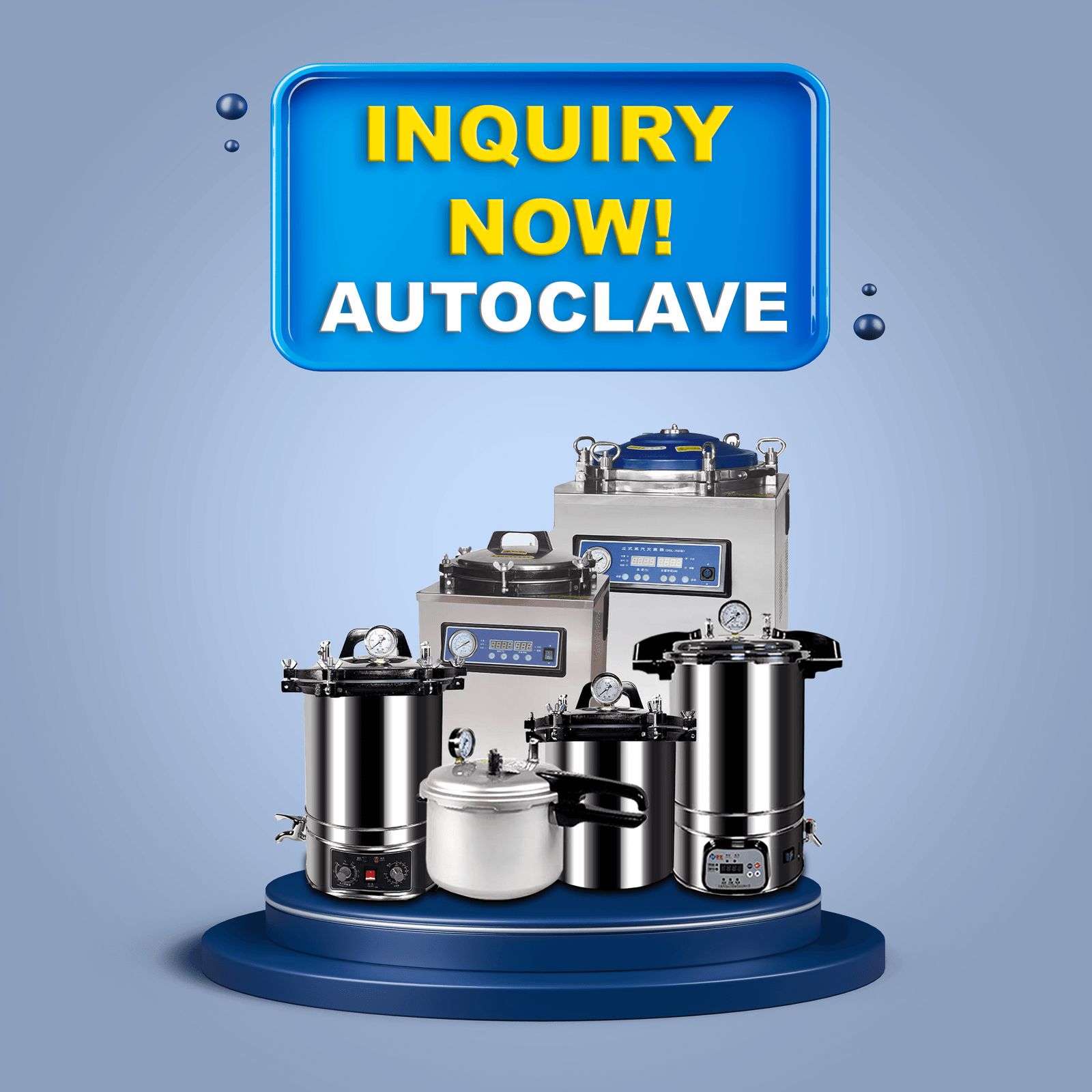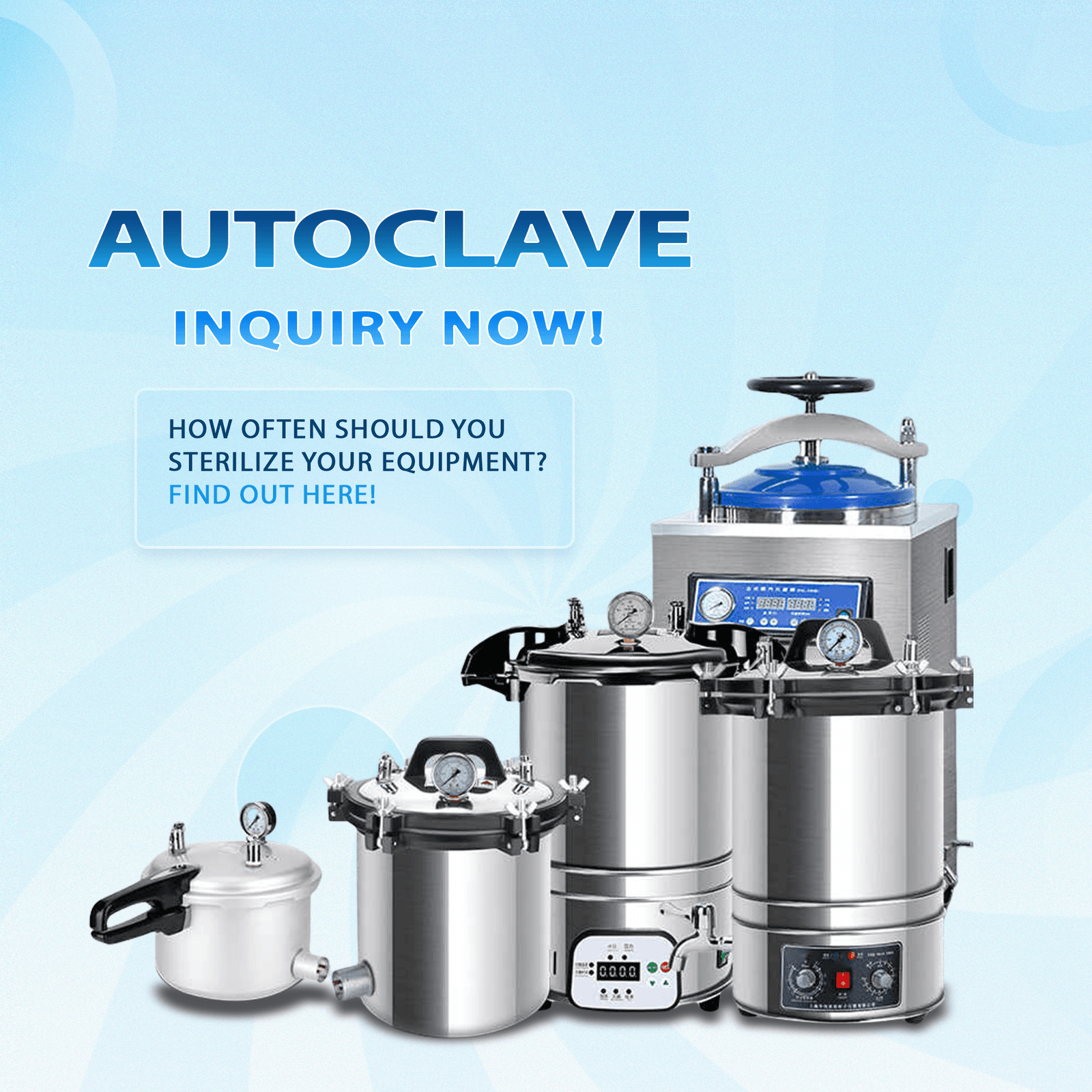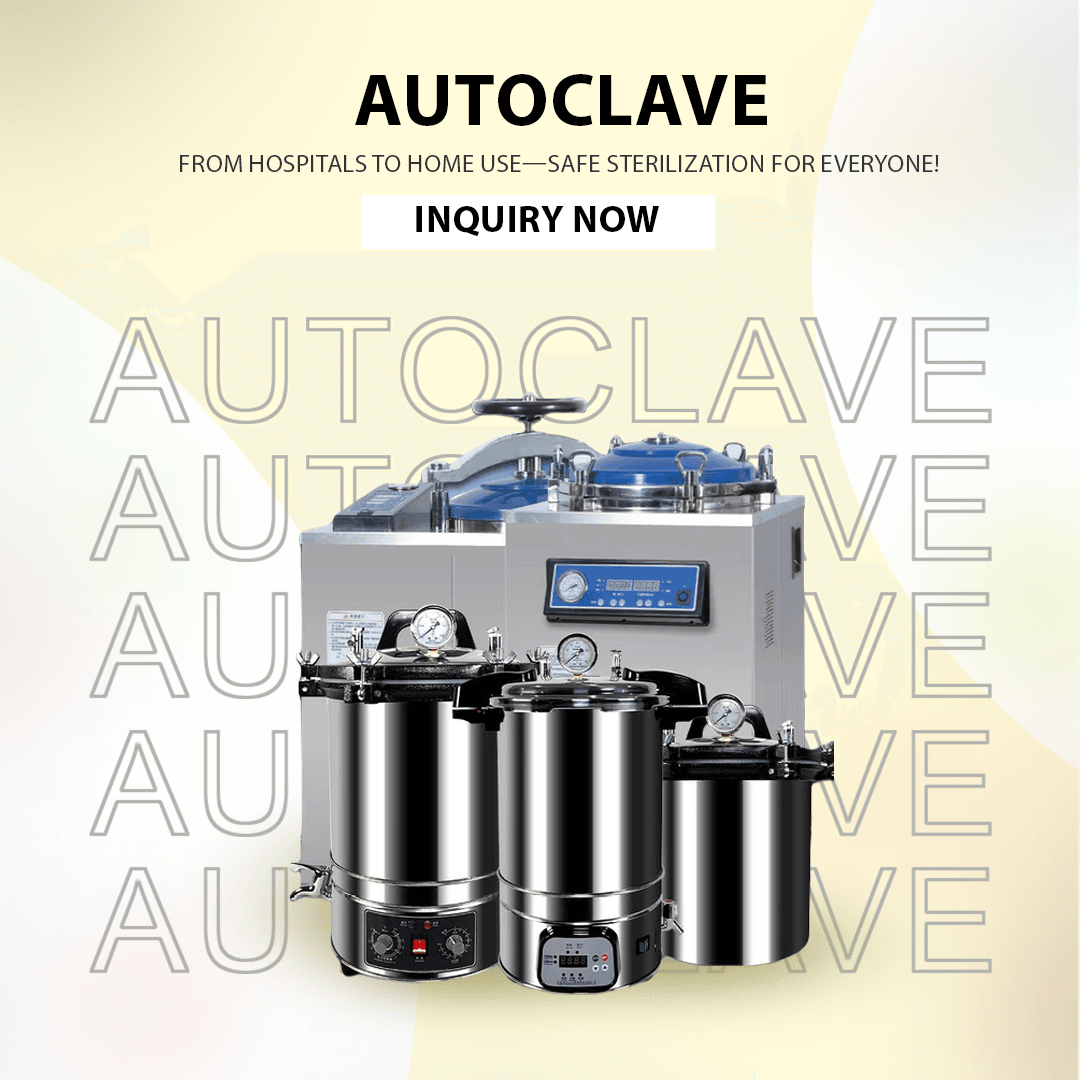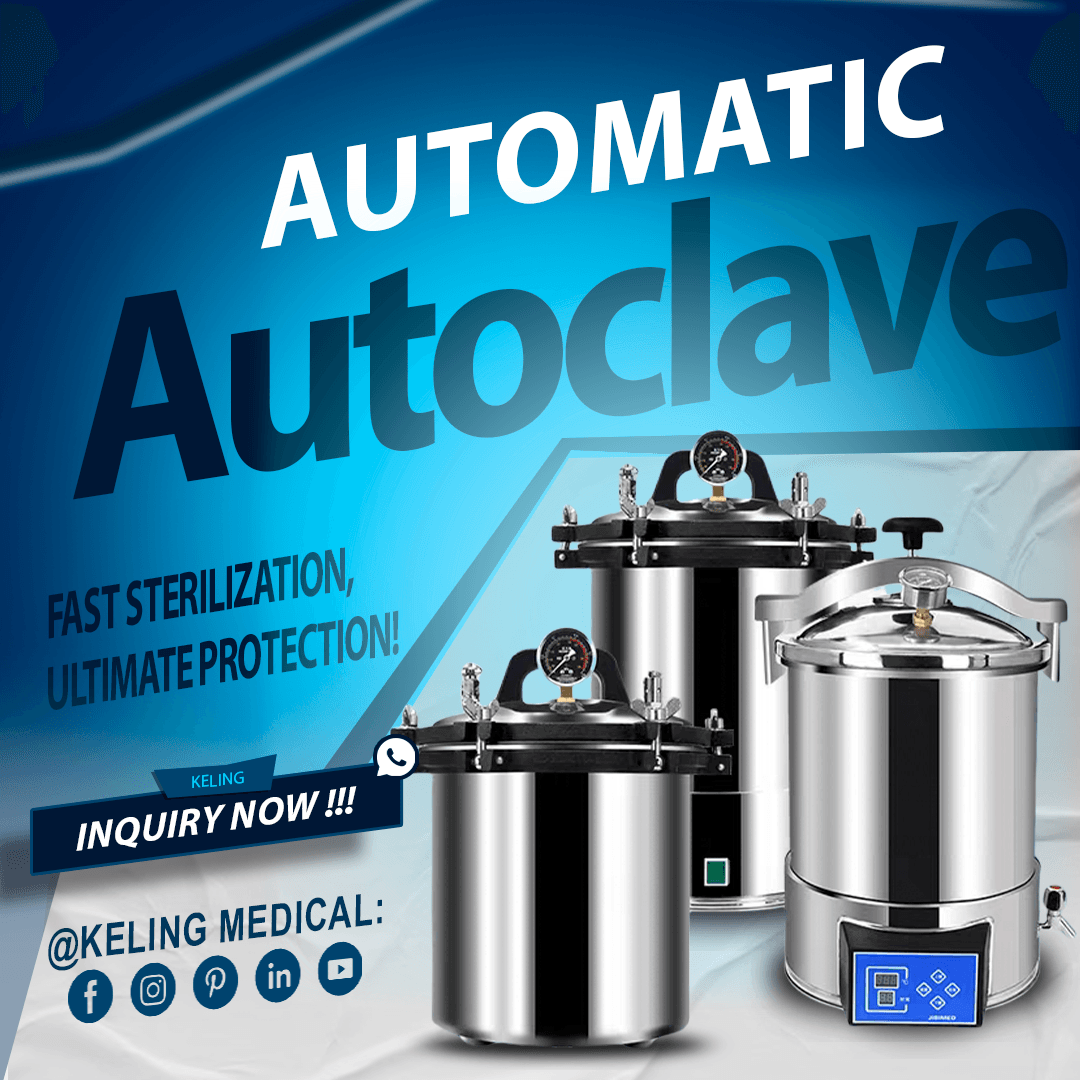
Autoclaves are indispensable tools in laboratory environments, playing a critical role in maintaining sterility and safety. While autoclaves have a wide range of general applications, their laboratory uses are particularly vital for research integrity, personnel safety, and compliance with regulatory standards.
Laboratory settings demand high standards of accuracy, safety and cleanliness. Autoclaves stand as dependable tools for laboratory sterilization by eliminating all viable microorganisms from equipment, media, and waste. This is crucial for several reasons:
Experiments can be invalidated by the presence of microscopic bacteria or fungi which may generate incorrect findings or cause research to fail.
The risk of infections acquired in the laboratory decreases with the implementation of proper sterilization procedures.
Handling biological materials requires laboratories to follow strict sterilization protocols as mandated by regulatory organizations.
Autoclaves enable laboratories to fulfill scientific and legal requirements which results in maintaining a secure and efficient workspace.
The primary function of autoclaves in laboratory settings is to sterilize both equipment and consumables. This includes:
Sterilization procedures target beakers, flasks, test tubes, and petri dishes to remove all residual microorganisms that might disrupt experiments or cultures.
Through autoclaving the media used to cultivate microorganisms reaches full sterility which prevents contamination by any extraneous microbes.
Laboratory instruments such as pipettes, spatulas, forceps and additional reusable tools require sterilization both before and after interacting with biological samples.
Maintains the precision and consistency of experimental findings.
Safe reuse of high-quality laboratory equipment helps reduce operational costs.
Supports compliance with laboratory safety protocols.
Pathogen laboratories produce biological waste that becomes a biohazard risk. Autoclaves sterilize biological waste to make it safe for disposal. **
Used culture plates and flasks
Contaminated gloves, gowns, and other PPE
Biological samples and tissue waste
Segregation: Waste materials are systematically divided based on their type and level of contamination.
Autoclaving: The waste disposal process involves loading biohazard bags into an autoclave where they are subjected to a standard temperature of 121°C and a pressure level of 15 psi for a minimum duration of 30 minutes.
Disposal: Waste disposal becomes safe after autoclaving and follows local regulations.
This process prevents infectious agents from reaching staff members, the public, and the surrounding environment.
Ensures compliance with legal standards for biological waste management and disposal.
Autoclaving helps prevent accidental spread of dangerous organisms.
Trustworthy scientific research relies on dependable sterilization processes. Autoclaves support research integrity in several ways:
Scientific research integrity depends on sterile equipment because unsterilized tools and media introduce variables that distort study results.
Microbiology and molecular biology studies require pure culture growth which must remain uncontaminated for accurate research outcomes.
Researchers must prepare sterile solutions and reagents for their experiments by using autoclaves for sterilization.
Autoclaves serve to sterilize animal cages along with their bedding and enrichment materials in scientific animal research to eliminate the risk of disease transmission.
The approach boosts experimental data’s reproducibility and reliability.
Facilitates cutting-edge research within the fields of microbiology, biotechnology, and life sciences.
Helps laboratories achieve their publication standards and secure research funding.
The successful sterilization of materials and laboratory safety depend on proper operation and regular upkeep of autoclaves.
Ensure steam penetration by not overcrowding the autoclave chamber.
Autoclave sterilization requires containers specifically designed for this purpose.
The use of heat-resistant gloves and face protection is mandatory when working with hot loads.
Verify sterilization cycles by using biological or chemical indicators.
Perform regular cleaning of the chamber and gaskets to prevent buildup and maintain a tight seal.
Calibration: Schedule periodic calibration and preventive maintenance.
Keep detailed records of sterilization cycles containing information about time duration along with temperature and pressure measurements.
Carry out routine performance checks of autoclaves through spore tests or alternative biological indicator methods.
Extends autoclave equipment lifespan while improving its performance.
Guarantees laboratory procedures meet accreditation and inspection standards.
The system safeguards personnel against inadvertent contact and device malfunction.
Autoclaves are the backbone of laboratory sterilization, supporting safe, accurate, and compliant research and diagnostics. From sterilizing glassware and instruments to decontaminating hazardous waste and supporting sophisticated experiments, autoclaves play a pivotal role in laboratory operations. For medical equipment distributors, dealers, and procurement specialists, understanding the full scope of autoclave laboratory uses is essential for delivering value and expertise to laboratory clients.
By following best practices in autoclaving, laboratories can safeguard personnel, protect the environment, and ensure the highest standards of scientific integrity.
Autoclaves in laboratories are used for sterilizing glassware, instruments, culture media, and for decontaminating biological waste to ensure a safe and contamination-free environment.
By providing reliable sterilization, autoclaves prevent contamination, maintain pure cultures, and ensure the accuracy and reproducibility of experimental results.
Biological waste such as used culture plates, contaminated personal protective equipment, and biological samples can be safely decontaminated in an autoclave.
Best practices include proper loading, using correct containers, wearing protective equipment, routine maintenance, and regular validation of sterilization cycles.
Regular maintenance ensures optimal performance, safety, and compliance with regulatory standards, preventing equipment failure and potential safety hazards.
For comprehensive guides, visit What Does an Autoclave Do? and What is the Autoclave Used For?.
Are you a laboratory distributor, dealer, or procurement specialist seeking high-quality autoclave solutions? Contact Keling Medical for expert advice and premium laboratory autoclave equipment!
Email: inquiry@shkeling.com
WhatsApp: +8618221822482
Website: https://autoclaveequipment.com/
Our team is ready to help you select the best autoclave for your laboratory needs. Reach out today for professional support and solutions!

Healthcare and laboratory environments must prioritize the total removal of dangerous microorganisms from all equipment and materials as a crucial step in protecting patient safety and controlling infections. Autoclaving sterilization

The healthcare industry operates under strict regulations and requires medical instrument sterility to protect patients from infections and maintain safety standards. A powerful autoclave sterilizer forms the core component of

Autoclaves are essential in healthcare because they sterilize medical instruments and materials which helps control infections. Regular maintenance along with proper cleaning determines whether these devices will function effectively. Medical

Autoclaves are essential equipment in healthcare and infection control for maintaining sterile conditions of medical instruments and laboratory equipment along with other vital materials. Medical equipment suppliers and procurement experts

Healthcare providers must prioritize instrument and material sterility to effectively prevent infections and protect patient health. Autoclave sterilization proves to be an exceptionally dependable method which finds extensive use across

The healthcare industry requires stringent infection control measures and therefore certain terms and tools are crucial for ensuring safety and hygiene. In medical and laboratory settings that demand sterile conditions